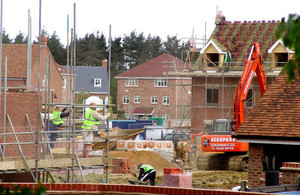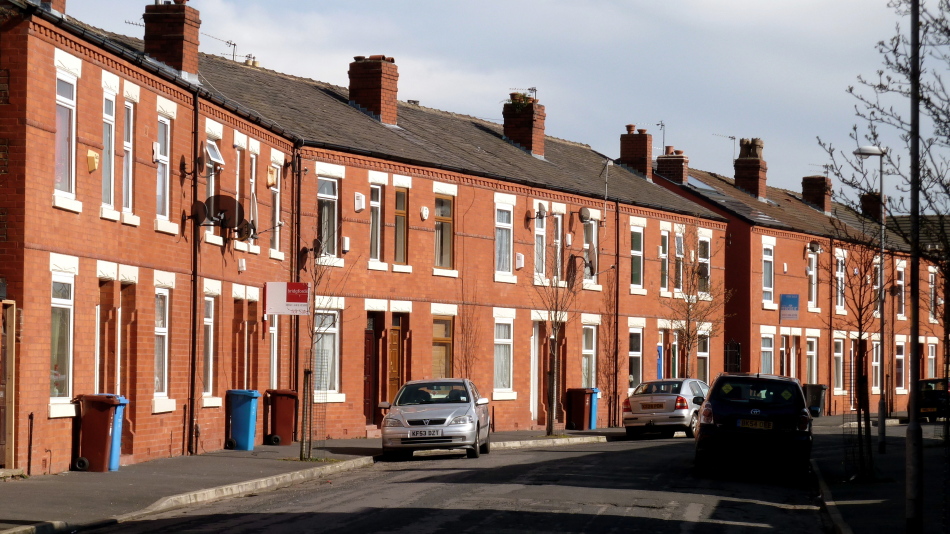Site visit: BPS
One recent July day, LSE London researchers visited Battersea Power Station (BPS) on the south bank of the Thames to look at progress on this enormous site, which will eventually have over 4000 new homes. Construction at BPS is proceeding much faster than on a typical for-sale scheme in London. This reflects the approach in Malaysia, home country of the scheme’s backers. Given the capital’s desperate need for new homes, this speed must be a good thing. But what’s it like on the ground, and what kind of place is emerging?
 Construction kicked off in 2014. Along the west side of the site, between the power station itself and the railway line to Victoria Station, the blocks of Circus West Village are now complete and the public areas can be visited. From a distance the BPS blocks merge indistinguishably with the seven buildings of Chelsea Bridge Wharf, a 2006 Berkeley Homes development on the park side of the tracks. But the final pedestrian approach to BPS, an Alice-in-Wonderland passage through a long, recently opened archway under Grosvenor Railway Bridge, makes it clear that you are entering a place apart.
Construction kicked off in 2014. Along the west side of the site, between the power station itself and the railway line to Victoria Station, the blocks of Circus West Village are now complete and the public areas can be visited. From a distance the BPS blocks merge indistinguishably with the seven buildings of Chelsea Bridge Wharf, a 2006 Berkeley Homes development on the park side of the tracks. But the final pedestrian approach to BPS, an Alice-in-Wonderland passage through a long, recently opened archway under Grosvenor Railway Bridge, makes it clear that you are entering a place apart.
At ground level the development is fully pedestrianised. The outdoor communal space is well designed, with handsome paving, thoughtfully placed seating and generous (mahogany?) handrails on the riverside fence. Watching two grebes survey the water from the tops of wooden posts, we felt as if we were at the seaside, far from London’s agitation.
But London reality intrudes as trains cross Grosvenor Bridge every couple of minutes, momentarily blocking the aircraft noise. The first residents will also be living next to a vast construction site. This could be a plus for those who enjoy watching heavy machinery in operation; visitors with similar tastes can look down from an elevated viewing platform into the excavations between the power station and the river.
The Circus West blocks are the first of seven phases of construction. Phase two will be the power station itself (still only a shell), which will house Apple’s London headquarters. The sunny, warm weather showed the new blocks to best advantage. Yet for a Londoner it was something of a surprise that from many angles they obscure the structure of the iconic power station—only its four fluted chimneys, around which construction cranes dance a slow ballet, emerge above them.
Accessibility
It will eventually be possible to access BPS by a dedicated Northern Line station part-financed by the developers, but for now it’s more of an effort. The train station at Battersea Park serves Victoria, but residents who need the tube must cross the river to Sloane Square (BPS will soon start a shuttle bus). There’s a Santander docking station on site, though the route past the new American Embassy to Vauxhall Bridge, sharing the road with trundling construction traffic, is only for the battle-hardened urban cyclist. There will eventually be a Thames Clipper stop.
Retail, private clubs, and residents
Circus West will have 865 homes and (eventually) a number of commercial and retail units. The first residents moved in in May and the blocks are still being populated. The carefully curated list of future ground-floor tenants—a bike shop, a boutique gin distillery, various purveyors of espresso—is likely to appeal to an upmarket, hipster, Apple-employee clientele.
Most of the retail units were still empty but the site’s grocery store had opened two days before our visit. The General Store was gleaming and beautifully lit and the friendly staff happy to chat. It is definitely more Fortnum and Mason than Lidl, with individually priced pieces of fruit (apples 45p) and a range of rosé wine that included magnums, double magnums and jeroboams.
Circus West may be partly occupied, but on a Wednesday afternoon we didn’t see anyone who looked like they lived there. The public areas were animated by construction workers and a few people having a nose around, like us. In the ground floor of one building sat a group of men in white shirts. This was ‘The Power Club’, according to the sign on the door. Online investigation revealed it to be ‘London’s most unique private members club, exclusively for residents of Battersea Power Station’—so perhaps we did glimpse some locals.
Affordable housing and community
 BPS is relatively unusual in the London context in that there was previously no housing on the site. This means there were no existing residents to buy out, decant or rehouse, and the scheme has largely avoided the political controversy aroused for example by the nearby Elephant and Castle estate regeneration—it was, in that sense, a blank slate. The absence of existing households certainly smoothed the route to planning permission, as there were fewer obvious losers from development.
BPS is relatively unusual in the London context in that there was previously no housing on the site. This means there were no existing residents to buy out, decant or rehouse, and the scheme has largely avoided the political controversy aroused for example by the nearby Elephant and Castle estate regeneration—it was, in that sense, a blank slate. The absence of existing households certainly smoothed the route to planning permission, as there were fewer obvious losers from development.
But an existing population of residents, with roots in the area, does provide a lattice on which a new community can grow. BPS must now create one from scratch. What sort of community will this be? The original planning permission for the BPS scheme required the developers to provide 15% affordable and social housing. Our visit to BPS coincided with the news that the developers had requested, and received, a reduction to 9% to make the scheme viable. This caused a flurry of controversy, and London Mayor Sadiq Khan was one of many to condemn the change.
Our visit suggested that the design and physical quality of this new neighbourhood will be impeccable, as befits its high-profile location. While its density has been criticised, the scheme may serve to demonstrate that excellent design can create liveable areas even at these densities.
The more interesting question is whether BPS will function as a genuine mixed neighbourhood rather than an upmarket enclave. This will be a challenge for several reasons. The affordable and social housing on large schemes is funded by profits from market housing. Pricier units generate bigger profits so, paradoxically, the system can produce new neighbourhoods with lots of luxury homes and some social housing but little in between. Many of the expensive homes in London’s riverside developments are sold to buyers from overseas. While many plan to rent their properties out, some owners will visit only occasionally, contributing to a ‘lights out’ feel. Finally, the strongest neighbourhood ties are created by children. Yet looking at a range of other recent high-density developments, we found very few families with children. The built environment is actually the easy bit—the hardest thing is nurturing a real community. It will be interesting to see how BPS goes about it.
To read more about Battersea Power Station Development:
Battersea Power Station website: https://www.batterseapowerstation.co.uk
London mayor blasts council over cut to affordable homes in Battersea revamp





